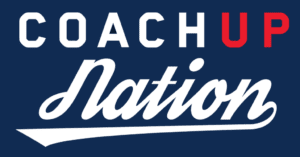One of the most challenging aspects of coaching is connecting with your players on an emotional and mental level. Should you criticize, yell, scream and punish? Should you praise, not raise your voice and reward? Whatever your coaching style, one thing that is crucial to your success is to remain relevant. The best way to do this is by interacting with other coaches and by getting to know your athletes.
Interacting with Coaches
As you know, a coach’s influence is strong – the coaches you’ve admired and interacted with will often guide you in your approach. You will frequently find yourself identifying and displaying the style and ideas of coaches from your past who’ve had a positive impact on you. On the flip side, you will also find yourself avoiding methods of coaches who’ve affected you negatively. Surround yourself with coaches who successfully connect with their athletes to seek their guidance and mimic their strategy. Yes, you’re the coach now, but you should always be open to learning.
Hands-On Experience
No matter who or what you learn from, there is nothing like hands-on experience – it teaches you how to react in different situations. How did Johnny react the last time he made a mistake in the game? Was he willing to jump right back in? Did he take some time to get over it? Learn your players and learn their reactions.
No matter what the “coaching textbook” says, you will come across situations and athletes that will require you to adjust your approach. Using the information you already have, along with knowing your athletes and situations, will allow you to make optimal decisions.
Coaching is a balancing act of learning from older concepts and embracing new concepts.
A Personal Story
As an athlete, one of the things that really bothered me was when I would make an error, a coach would inevitably say something along the lines of “you have to make that play.” Whenever I heard this, I would think about how I had just let my team down and everything that I had done wrong, which often lead to a negative snow ball effect, hindering my confidence and performance.
Now as a coach, this experience made me want to approach errors in a different way with my athletes. Instead of telling the player “You need to make that play!” I ask them a question. That question could be either “What happened?” “How did you feel while making that play?” or “What did you see?” If I do not ask a question, I point out ‘things gone right’ (TGR for short), followed by a modification that will help them improve next time.
This method has worked very well – I once had a player tell me “I feel free to make a mistake while playing for you because I feel as though I’m getting better with each mistake I make. However, I’m not happy with making the mistakes because I know I am capable of doing better. I’m better able to handle my mistakes and look forward to the next play more than I ever have, because I’ve learned to better control my response to both good and not so good plays.”
That’s what the balancing act is all about – keeping your players energized and excited about what comes next.
A lot of times, veteran coaches go for tried and true whereas new coaches go for exciting and new – I encourage you to go for energizing and woo! As a coach, how do you balance between the tried and true and exciting and new?
How useful was this post?
Click on a star to rate it!
Average rating 0 / 5. Vote count: 0
No votes so far! Be the first to rate this post.




